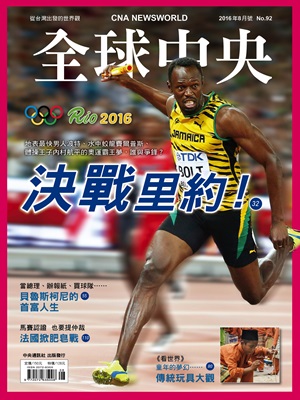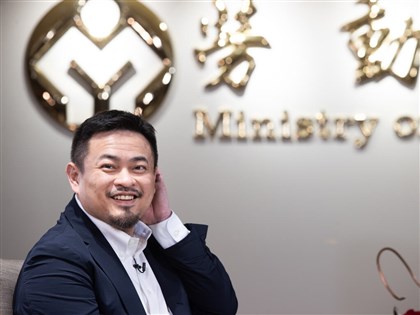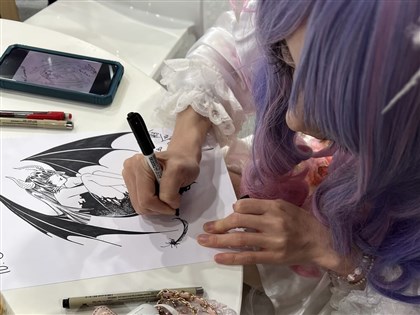傳統或工業? 法馬賽皂正宗戰
法國馬賽以傳統肥皂聞名,但馬賽肥皂「正宗」配方之爭,卻讓製皂業者充滿憤怒
譯解/劉佳硯 (中央社編輯) 圖/歐新社
● MARSEILLE, June 12, 2016 (AFP) - It is as French as baguette, and as emblematic of the country's southern Provence region as lavender fields and cicadas. But a dispute over the "official" recipe for the region's famed traditional soap, "savon de Marseille", has producers in a froth.
● 就如同法式長條麵包之於法國,薰衣草田與蟬象徵著南法普羅旺斯一樣,法國馬賽以傳統肥皂聞名,但馬賽肥皂「正宗」配方之爭,卻讓製皂業者充滿憤怒。
● With cheap Chinese and Turkish soaps flooding the market, manufacturers want Marseille soap to be granted a "geographical indication" (GI) so consumers can tell the difference between the real thing and cheap imports.
● 隨著中國與土耳其製的廉價肥皂充斥市場, 製造商希望能在馬賽皂冠上(原產地)「地理標示」,讓消費者能因此分辨真品與廉價進口商品的差別。
● But a dispute over how "true Marseille soap" should be made has the producers themselves at each others throats.
● 但是,光是爭論何為「正宗馬賽肥皂」,就已經讓製造商吵翻天了。
● In one camp are a dozen soapmakers from across the southeast of France led by the cosmetics giant Occitane who have formed the Association of Makers of Savon de Marseille (AFSM). ● 一邊陣營是由美妝巨擘歐舒丹帶領,來自法國東南部各地的12家製皂商。歐舒丹已成立馬賽皂製造商協會(AFSM)。
● It was they who filed the bid in October to have the soap recognised as a GI, a designation which already protects many French wines and cheeses.
● 馬賽皂製造商協會也在去年10月發起行動, 希望讓馬賽皂獲得「地理標示」認證。這項認證已經保護許多法國製的葡萄酒和起司。
● I n the other corner are four die-hard traditionalists, master soapmakers from the Marseille area itself who want to bring the product back to its artisanal roots.
● 另外一邊則是四家來自馬賽區堅守古法傳統派職人、製皂大師的肥皂廠,希望把馬賽皂產品帶回工藝根源之上。
● Their supporters in the Mediterranean city started a petition on change.org that has gotten more than 123,000 signatures to back their demand for a return to something closer to the original recipe, first officialised under the "Sun King" Louis XIV in 1688.
● 他們在馬賽市的支持者於change.org網站上發起請願連署,訴求是讓馬賽皂的成分恢復到接近原始配方、也就是1688年「太陽王」路易十四時期首次公布的官方認證配方,已經有超過12萬3,000人連署支持。
● But relations between the two camps are so bad now that the French state is having to arbitrate the vexed question of the soap's "official" make-up.
● 然而,雙方陣營關係交惡到以至於現在法國政府必須出面仲裁,這個關於「正宗」馬賽皂成分的棘手問題。
*看單篇不過癮?訂閱全本電子雜誌《全球中央數位雜誌》
Heresy
分歧● " Ta l k s h a ve b r o k e n d ow n , o u r o n l y communication now is through third parties, "said Serge Bruna of the more industrial AFSM.
● 偏向工業化生產的馬賽皂製造商協會成員布魯納(Serge Bruna)說,「談判破裂,透過第三方是我們現在唯一的溝通管道。」
● While they are pushing for the norms for a "traditional savon de Marseille" to be based on vegetable oil and soda ash, they also want certain additives and perfumes to be allowed.
● 雖然他們持續推動,以植物油、蘇打粉為製做基底標準的「傳統馬賽皂」,但他們也希望能被允許在肥皂裡加入一些添加物和香味。
● But this is heresy for the traditionalists who make their soaps from scratch in large cauldrons without recourse to ready-made ingredients produced elsewhere.
● 但是,這樣的做法對於從大鍋開始,不依賴現成原料製作肥皂的傳統派職人來說,可是非常不苟同。
● "We are the last to keep up the traditional know-how," said Marie Bousquet-Fabre, great grand niece of the founder of the Marius Fabre soapworks. "We are true soapmakers. We start from the vegetable matter and oil and we transform them by heating them with the soda ash in our cauldrons."
● 法國法鉑馬賽肥皂(Marius Fabre)創辦人曾姪女Marie Bousquet-Fabre說,「我們是保存傳統技術知識的最後一群人。我們從植物性物質與植物油開始製作,加入蘇打粉,在大鍋中加熱製成,我們是真正的肥皂製造業者。」
● Marseille soap was original made with sea water, olive oil and soda ash, but for decades olive oil has given way to palm and copra oil.
● 馬賽皂最初以海水、橄欖油、蘇打粉製成,但是數十年來,棕櫚油和椰子油取代了橄欖油。
● Even the traditionalists now use some palm or copra oil in their olive soaps.
● 即便現在,傳統派職人也在橄欖油皂裡添加一些棕櫚油或椰子油。
*看單篇不過癮?訂閱全本電子雜誌《全球中央數位雜誌》
Marseille only
馬賽特有
● Their lobby group, the UPSM, however, insists that true savon de Marseille can only be produced by artisanal makers in the Bouches-du- Rhone region around the city.
● 四家業者所組成的遊說團體,馬賽皂專業製造聯盟(Union Professional Makers of Savon de Marseille, UPSM),堅持真正的馬賽皂,只能由位於普羅旺斯地區,馬賽市附近的工藝製造業者生產。
● This has angered the rival AFSM whose members are spread over a large swathe of southern France.
● 此舉激怒了敵對陣營馬賽皂製造商協會,它們的成員大範圍地散佈於南法地區。
● AFSM’s Br una claimed that the austere pale green and beige blocks of soap made by the traditionalists "are not what 90 percent of consumers want".
● 馬賽皂製造商協會的布魯納宣稱,由傳統派職人生產,外表質樸的淡綠色和米色皂磚「不符合90%的消費者需求」。
● One of the biggest sellers in his Licorne brand's shop in Marseille's Old Port is a soap in the shape of a sardine. For many customers, the lavender oil added to the soap gives it "the essential odour of savon de Marseille", he claimed.
● 位於馬賽舊港的法國手工皂品牌獨角獸(Licorne),賣得最好的產品是沙丁魚形狀的肥皂。布魯納說,對多數的消費者而言,添加薰衣草精油,賦予了「馬賽皂不可或缺的香氣元素」。
● The French government, however, is taking its time over the decision partly because the Marseille soap will be the first manufactured item to be given the GI status -- something that has up to now been reserved for food products.
● 然而,法國政府正在審慎評估這項決定,部分原因是,馬賽肥皂將會是第一項授予「地理標示」的加工品。目前為止,這項認證標章只保留給食品。
● It hopes it will lead the way for other French regional products like Basque berets, Limoges porcelain and knives from Laguiole getting the same classification.
● 馬賽皂製造商協會希望此案能帶領其它法國原產商品如巴斯克貝雷帽、里摩瓷器、拉奇歐勒刀具,獲得相同認證。
● With a publ ic inqui r y into the soap's composition ending only next week, no official decision is expected until September.
● 馬賽皂成分的公開調查即將在下週截止,然而官方的裁定預期9月以前不會公布。
● But an advisor to minister of state Martine Pinville, who will make the final decision, said the dilemma for officials was "promoting quality" while opening the GI classif ication to a "a maximum number of people".
● 具有決定權的法國經濟部長瑪蒂娜.本維勒(Martine Pinville)身邊的一名顧問說,官員認為,將「地理標示」的標章分類開放至「人類極大數量」和「推廣品質」是存在兩難之處。
● Sebastien Malangeau told AFP that the ministry was "ready to be as flexible as possible... but the most important criteria is the quality". ● 顧問Sebastien Malangeau告訴法新社說,經濟部對此案「已經準備好會儘可能彈性處理⋯但是最重要的標準還是產品品質」。
● If the label is just seen as "a marketing gimmick it will die", he added.
● Sebastien Malangeau繼續說道,如果標章看起來只像是「一個行銷花招,就完了」。(完)
更多精彩內容請見《全球中央》2016年8月號;訂閱 《全球中央數位雜誌》;本文由《全球中央》雜誌授權刊載,未經同意禁止轉載。
本網站之文字、圖片及影音,非經授權,不得轉載、公開播送或公開傳輸及利用。

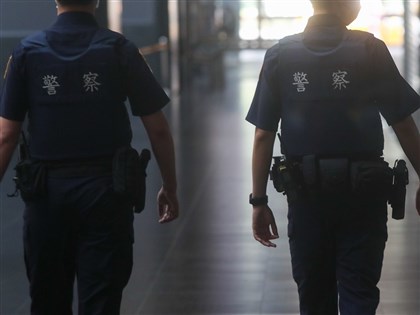



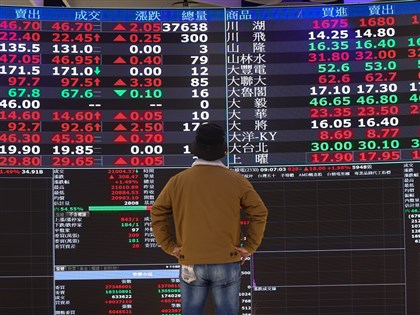






![網紅Ray登美國GQ秀護照 鏡頭前吃牛肉麵喝珍奶喊想念台灣[影]](https://imgcdn.cna.com.tw/www/WebPhotos/400/20250401/1176x661_wmkn_045066739343_0.jpg)



